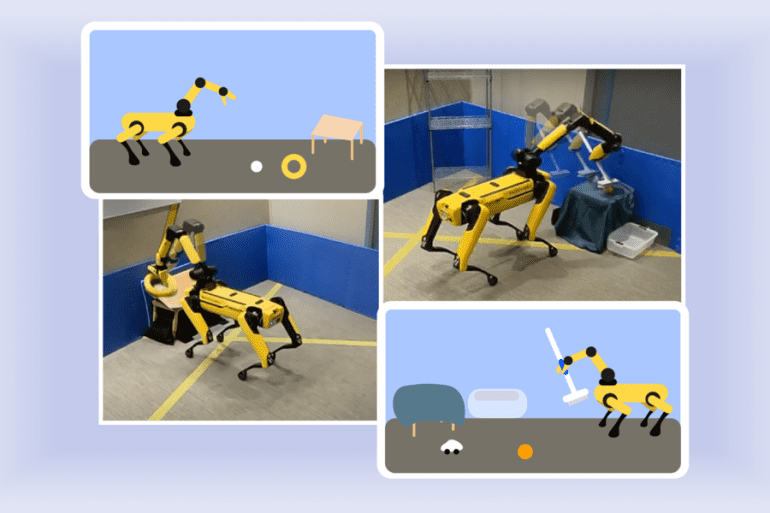- EES algorithm enables robots to practice and refine skills autonomously.
- Robots can improve tasks with minimal data points, significantly reducing training time.
- Vision system monitors and evaluates robot performance to guide practice sessions.
- Tested on Boston Dynamics’ Spot robot, showing faster skill acquisition than previous methods.
- Future enhancements include integrating simulations and reducing practice time.
Main AI News:
“Practice makes perfect” applies not just to humans but also to robots adapting to new environments. A robot deployed in a warehouse with pre-programmed skills might struggle with tasks like picking items from unfamiliar shelves. To improve, specific skills must be identified and refined within a task.
While traditional methods involve human intervention, researchers at MIT’s CSAIL and The AI Institute have developed the “Estimate, Extrapolate, and Situate” (EES) algorithm. This innovative system, presented at the Robotics: Science and Systems Conference, allows robots to practice autonomously, improving their abilities in various environments, from factories to homes.
EES uses a vision system to monitor surroundings and evaluate how the robot performs actions reliably. It then determines whether additional practice is needed and initiates sessions to refine the skill. This approach is practical in diverse settings, such as hospitals or households, where robots might be tasked with activities like sweeping.
Nishanth Kumar, a PhD candidate and co-lead author, notes that EES allows robots to improve with just tens or hundreds of data points, a significant reduction from the thousands typically required by standard reinforcement learning.
EES was tested with Boston Dynamics’ Spot robot, which completed tasks like placing a ball on a slanted table within three hours and improving at sweeping toys into a bin in two hours—much faster than previous methods.
Tom Silver, co-lead author and now an assistant professor at Princeton, explains that the goal was to enable robots to gather their own experience and identify the most effective strategies for improvement.
The researchers aim to reduce practice times by integrating simulations with physical practice. They also plan to refine EES to minimize delays and explore algorithms that optimize skill improvement.
Danfei Xu of Georgia Tech and NVIDIA AI, who was not involved in the study, highlights the importance of allowing robots to learn and adapt autonomously, especially as they become more common in households.
The study, supported by various U.S. agencies and MIT’s Quest for Intelligence, showcases a significant step toward creating robots that continuously evolve and improve in real-world environments.
Conclusion:
The development of the EES algorithm represents a significant advancement in robotics, particularly for industries reliant on automation. This technology could drastically reduce training time and operational costs by enabling robots to improve their skills with minimal human intervention. As robots become more adept at learning and adapting in real-time, we can expect a broader adoption across various sectors, including manufacturing, healthcare, and consumer services. This shift could lead to increased efficiency, reduced labor costs, and the potential for new market opportunities in developing adaptive robotic systems for diverse environments.

